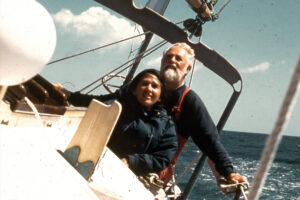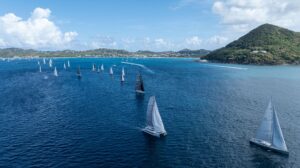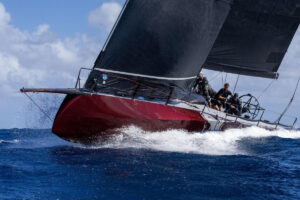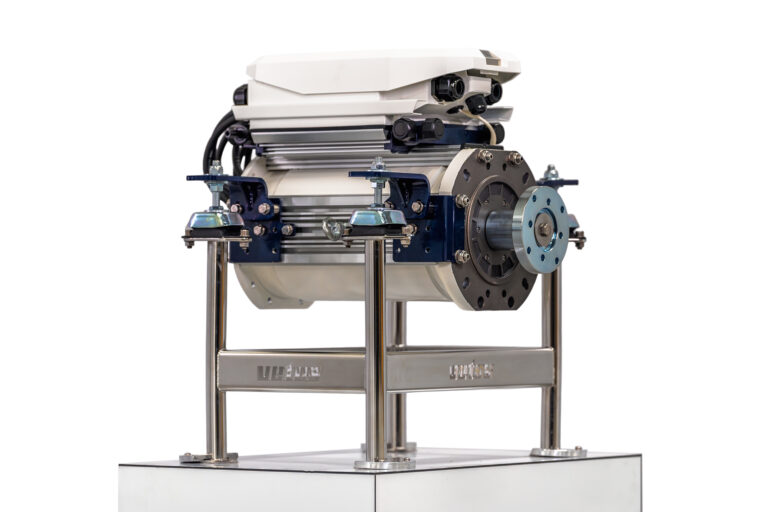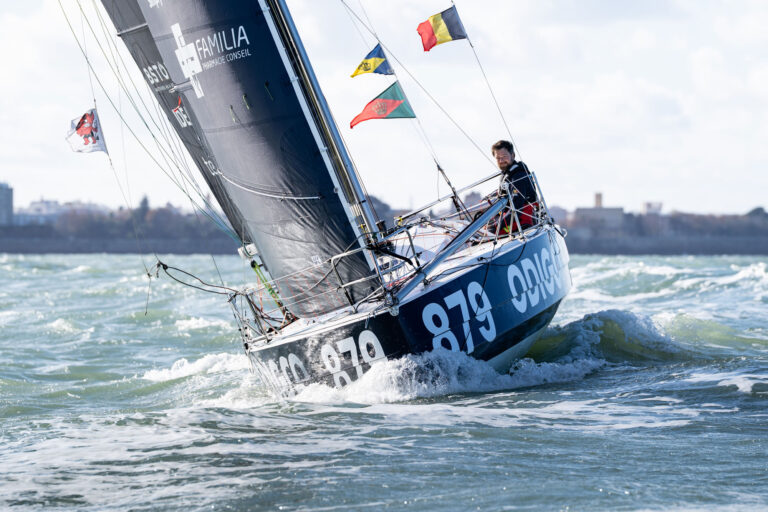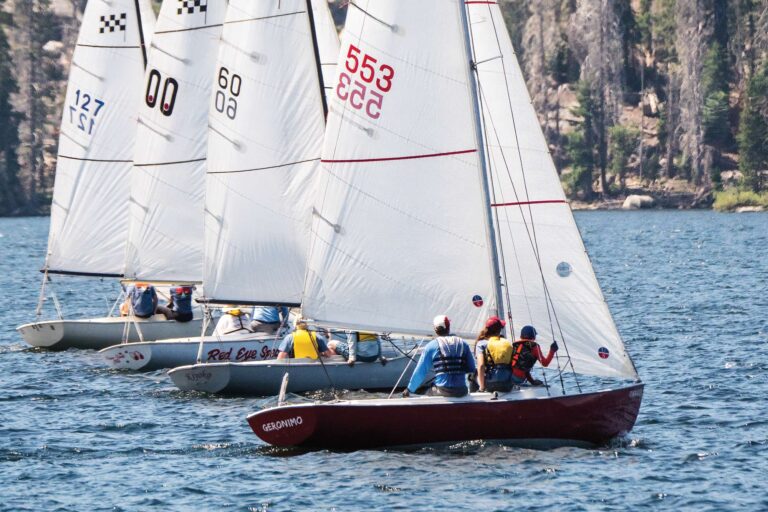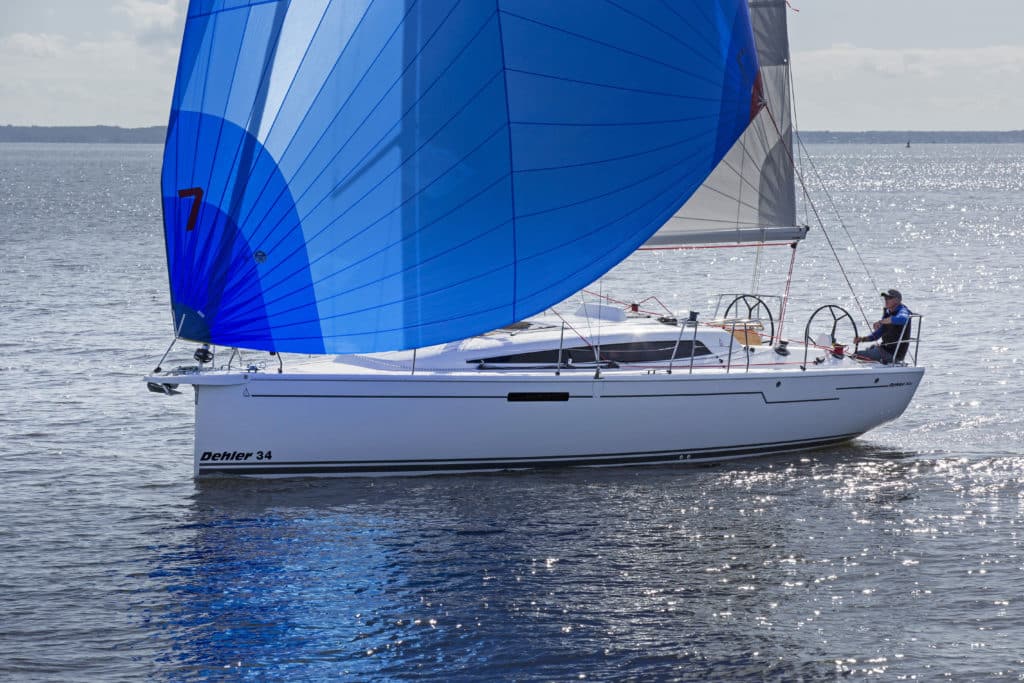
Winner: Dehler 34
It’s not every year that the Boat of the Year fleet includes a group of performance-oriented sailboats that are competitive on the racecourse, laid out for vacation cruises, and ideally suited to pleasant daysails. But the class of ’17 produced a bumper crop of four very different vessels, ranging between 30 and 36 feet, that tick all the boxes for fast, fun, compact boats that were crafted for the purest of reasons: the simple joy of sailing. It was also an international collection of nifty coastal cruisers, with nominees built in France (J/112E), Germany (Dehler 34), Slovenia (Elan E4) and the United States (Alerion Sport 30).
We’ll begin with the Alerion Sport 30, which caught the judges’ collective eye for several reasons. “I have always been in love with the lines of this brand,” said Carol Hasse. “[The Alerion has] a performance hull and keel. I think it’s an aesthetic gem.” “It’s powered with an Oceanvolt electric engine that’s relatively new to the U.S. market, with lithium-ion batteries providing the juice,” noted Ed Sherman. “I give it kudos because the package works very well.”
“This is an infused vinylester hull all the way through, so they paid close attention to the weight in it,” said Tim Murphy. “It’s offered with a carbon rig and swept-back spreaders. The emphasis on this boat is the sailing, and it’s a delightful boat to sail. So that’s the focus here; it’s not really about long-term cruising. They call it a weekender, which is an apt description. That said, the experience of sailing this boat is very pleasurable.”
Unlike the Alerion, the Elan E4 has twin rudders and comes complete with a full cruising interior. Murphy summarized the boat from its historical perspective. “Elan has been in business for 70 years. They build skis and they build boats,” he said. “They had a big presence in the United States until the economic downturn. But they’re coming back, and I think we’re going to see a lot more of them. John Peterson is their director. He’s a legendary guy in the production boatbuilding world who ran Hunter Marine for many years. He’s living in Europe now and is running Elan. I think this is the beginning of a line we’re going to see a whole lot of in the States going forward.”
“I found the cockpit seating quite comfortable,” said Hasse. “It had a nice backrest. The teak cockpit felt warm and had good nonskid on it, as did the decks. The handholds on the companionway ladder made it very secure when going down below.”

The Elan sailed well, as did the next boat in the category, the J/112E (the “E,” says the manufacturer, stands for “elegance”). “This was a sweet boat to sail,” said Murphy. “It looks beautiful on the water and makes you go ‘Ah!’ when you see it.”
Murphy also put the J/Boat in context with the rest of the class. “At $300,000, it’s the most expensive boat in the category and the most expensive per pound. It’s also the lightest boat and has the lightest displacement-to-length ratio in the class. The helm was really nice. I like the ergonomics of how it’s set up. It’s got a big wheel, and when you’re steering, you can sit outboard on the coamings and drive the boat with fingertip control.”
Last but far from least was the Dehler 34. Once again, Murphy considered the boat with respect to the other nominees in the Performance Cruiser category. “This entire class has boats that give you real sail controls, with the traveler aft and end-boom sheeting anchored on the cockpit sole so you can really shape the mainsail,” he said.
“Within this category, the Dehler, which costs $215,000, breaks down at $17.09 per pound in relation to its displacement,” he added. “Compare that to the J/112E, which is $26.55 per pound. So it’s much less expensive for its size and also in real dollars. And it has a great accommodation plan. There’s a nice interior, and once underway, the helm was delightful. So I think it does what the builder said it would do, and it does so at the best value in the category. That was impressive.”
“This boat really lit up for me when we had a chance to sail it,” said Sherman. “And during our motoring tests, it was quiet down below. There wasn’t a lot of vibration or rattling parts or weird harmonics going on, and that’s always a good thing. To me, that’s really an indicator of the quality of the assembly.”
“I really enjoyed sailing that boat,” said Hasse. “The twin wheels were just effortless; they were like butter. Oh my goodness! And I like the fact that they focused on performance both in their sail package and with the carbon-fiber mast.”
When all was said and done, Murphy spoke for the entire judging team when he summarized the Dehler: “I think in terms of the category trying to find a nice crossover between cruising accommodations and a boat that you can take sailing, it just hit its mark.” With that, the panel named the Dehler 34 the year’s Best Performance Cruiser. With great value (at a sailaway price of $215,000, it was 2017’s least expensive entrant) and terrific execution, you might call it a win-win situation.

